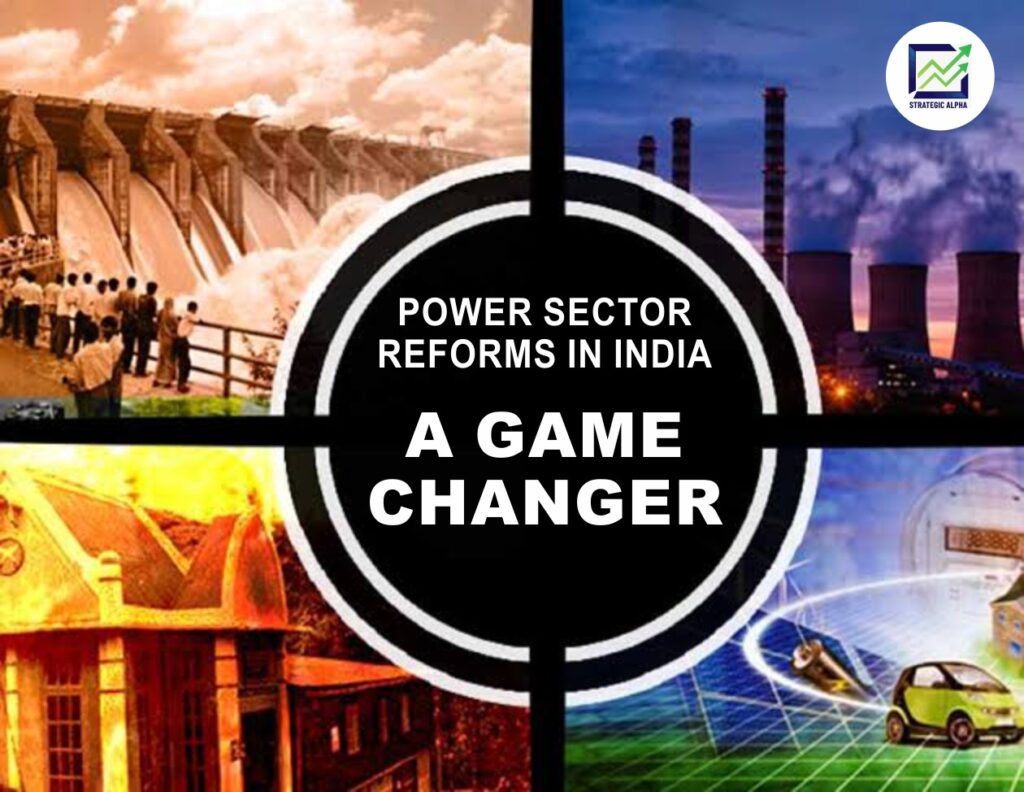Introduction
It is no secret that India’s post-pandemic economic recovery would be aided by a strong and efficient power industry. Universal access to affordable, clean, and contemporary energy is critical for a growing population well-being as well as industrial competitiveness. In this context, the government’s proposed modifications to the Electricity Act of 2003 could be a game changer, launching the next wave of legal and regulatory reforms in line with the sector’s drastic transformation.
During the Covid-19 outbreak, the Indian government proposed the Atmanirbhar Bharat plan, a rescue package for the power sector. The purpose of this bailout package was to ensure that the necessary electricity market network was not impacted as a consequence of the discoms’ failing to comply with their obligations.
This isn’t the first time the central government has stepped in to assist discoms and tackle the concerns they face. Despite the frequent interventions, cash-strapped discoms are now appealing for another bailout package.
Challenges Being Faced by the Power Sector
Power distribution, which is made up of numerous state-owned distribution companies, is the weakest link in the power sector’s value chain. While previous governments attempted to reform power distribution firms with the Electricity Bill of 2003 and other measures, these companies have mostly stayed in the red.
According to a report released by the NITI Aayog last year, the electricity distribution corporations lost Rs 90,000 crore in the previous financial year. “As a result of these accumulating losses, discoms are unable to pay electricity generators on time – a sum of Rs 67,917 crore was overdue as of March 2021”
Here are some of the major issues that the power industry has been facing which has limited it’s growing capacity.
AT&C Losses
Aggregate technical and commercial (AT&C) losses occur as a result of defective or insufficient infrastructure, or bills that are not generated or honoured.
India is one of the world’s largest power markets, but it is also one of the most inefficient, as evidenced by the sector’s aggregate technical and commercial cost (AT&C) losses of roughly 22%, compared to the global average of 8%.
Cost-to-Revenue Gap
The cost-to-revenue gap remains wide between discoms’ costs (average cost of supply) and revenues (average revenue realised).
This is due to the lack of consistent and updated electricity rates.
Increasing Inefficiency
Ironically, the government’s goal for universal electrification has exacerbated inefficiency.
When domestic interconnections are accelerated, cost mechanisms must be adjusted, and the logistics (transformers, wires, etc.) must be upgraded to support increased levels of electrification.
In the exclusion of all of this, deficits will certainly mount.
The Pandemic’s Economic Consequences
Due to the outbreak, consumption from residential and manufacturing users has declined, reducing earnings from this channel, which is used to cross-subsidize other users, adding to the discom’s economic hardship.
Low-cost investment
Because of the dicoms’ poor financial status, there are less capital funds in the power industry (particularly by the private sector).
More than Rs 50,000 crore has been invested in rural networks over the last decade, although actual investments have been far less than anticipated.
Reforms Introduced
India’s AT&C losses in 2021 were 24.54 percent, more than double the global average. With dues of about Rs 70,000 crore (March 2021), cash-strapped discoms have failed to meet their payment obligations to generators, causing stress throughout the value chain. Because they are perpetually in the red, they have been unable to modernise their infrastructure or invest in technology such as smart metres.
To combat the issues plaguing the power industry, the central government has come up with certain schemes and reforms to transform the market outlook. The first is RDSS – a scheme launched in 2021 with a more comprehensive plan and utility to enhance the sector than its multiple predecessors. The other and one of the biggest reforms is the amendment of the Electricity Bill which has proposed to delicence the power sector for better efficiency.
RDSS
The Revamped Distribution Sector Reform Scheme (RDSS), which was launched in July 2021, is the most recent of many central government grant-based programmes aimed at energy distribution network investments.
It attempts to boost discoms’ operational efficiencies and financial viability (excluding Private Sector DISCOMs). It would offer discoms with conditional financial aid to help them improve their supply infrastructure.
Better feeder and transformer metering, as well as pre-paid smart consumer metering, account for half of the budget. The remaining half will be spent on power loss reduction and network strengthening, with 60 percent of the funds coming from central government grants. It is an umbrella initiative that will include all existing power sector reform schemes, including the Integrated Power Development Scheme, DDU Gram Jyoti Yojana, and Pradhan Mantri Sahaj Bijli Har Ghar Yojana.
The nodal agencies for the implementation of this initiative are the Rural Electrification Corporation and the Power Finance Corporation.
In terms of building investments, transitioning to privatisation and digitalization, and transcending from ailing sector to most enticing private investment destination, the distribution sector is expected to see enormous investments and occurring times. The RDSS appears to be paving the way for this shift in the sector, and it will go down in history as one of the most pivotal and game-changing events in the country’s power industry.
Electricity Amendment Bill 2021
The Electricity (Amendment) Bill, 2021, is scheduled to be introduced in Parliament soon. The proposed bill is the government’s latest attempt to overhaul a sector that has witnessed modest adjustments for the past 25 years but has never addressed the challenges that afflict it.
The Bill intends to drastically modify the whole power supply chain’s power distribution structure. The bill proposes complete delicensing to abolish the state’s electricity distribution monopoly by allowing multiple companies to operate in the state.
The idea to “delicense” distribution by using a sub-licence or franchisee model is a standout feature. This will make it easier for private companies to enter the market and compete with discoms. While consumers will benefit from reduced rates and better service, this will also attract new capital, innovative methods, and cutting-edge technology, increasing efficiency and decreasing losses.
Compliance is another significant emphasis of the Bill, which aims to strengthen and streamline multiple regulatory organisations for greater governance and faster dispute settlement. Other major steps include the implementation of smart metres, which are expected to improve billing efficiency, as well as consumer access to round-the-clock electricity supply and incentives to switch to solar energy via rooftop solar panels.
Other significant changes planned as a result of the Bill include the appointment of a member with a legal experience to each electrical regulatory commission, as well as the strengthening of the Electricity Appellate Tribunal. This will result in faster resolution of long-standing issues and less legal headaches for all parties involved.
Moving Forward
While the impact of the reforms by the government is yet to be decided, there are certain issues that have been left unaddressed which would need careful deliberation. Discussing various issues that can still lead to a failure of the reforms would enable us to understand what to expect while moving forward.
Strengthening Rural Networks
To satisfy rising demand, rural networks must be strengthened. More network investment will be required to meet increased supply hours, appliance usage, and the needs of rural industries.
Without this, there is a greater danger of power disruptions. This difficulty can be the focus of the RDSS system’s strengthening strategies.
Role of States
States must identify implementation challenges, develop appropriate metering strategies, and develop frameworks for comparing benefits vs costs. States should underline the need for flexibility in their action plans, allowing discoms to make an informed decision between prepaid and postpaid metering.
In addition, the state regulator must establish a framework for evaluating cost savings and improved performance as a result of smart metres, as well as safeguard customers against unjustified tariff increases as a result of such expenditures.
The monitoring, tracking, and fund disbursement procedures used by central government agencies should also be adaptable.
Concerns about fixed costs remain unaffected.
There has been no attempt to address rising coal and freight prices, which have both increased at rates faster than the weighted-average WPI and CPI indexes.
Delicensing objections
States have expressed concerns that allowing private players to enter the market could lead to “cherry-picking,” with private businesses offering power to just commercial and industrial customers while leaving household and agricultural customers out. In India, electricity tariffs vary substantially, with commercial and industrial players cross-subsidizing the power use of rural residential and agricultural consumers by paying significantly higher bills.
AT&C Losses
A provision in the Act for evaluating the states’ governance status may make AT&C losses a significant performance metric. This measure combines per capita income / consumer paying capacity, law enforcement, and the state’s financial situation in terms of timely subsidy release to discoms.
Shifting Landscape
We’ve seen a shift away from fossil fuels and toward cleaner sources like renewables in recent years, and the power sector needs to be future-ready to handle the interaction of distributed energy resources, storage, EV charging requirements, and other developing technologies. While these technologies have paved the way for next-generation technology improvements, legislative changes are needed to ensure the sector’s long-term viability while also fostering transparency and accountability.
Targets
- By 2024-25, AT&C (aggregate technical and commercial) losses will be reduced to 12-15 percent across India.
- By 2024-25, the ACS-ARR gap (the difference between the overall cost of electricity and the revenue generated from supplying power) will be zero.
- Institutional capabilities for modern discoms are being developed.
- The quality, dependability, and cost of energy delivery to customers would all increase with a financially sustainable and operationally competent distribution sector.
Conclusion
The proposed reforms reflect the Centre’s desire to build a strong power sector to help the economy recover after the pandemic. It’s vital that these amendments get a chance to be heard. Not unexpectedly, several states have objected, citing worries about the centralization of authority, increased privatisation, and the viability of the direct benefit transfer model for subsidising consumers. At the same time, even in the absence of the reforms, several states have begun to go in the correct way.
The modifications should energise the power sector as we work toward a “greener” grid and more affordable energy for everyone. However, on-the-ground execution will be critical, and this can only be feasible if the Centre actively engages with the states and leads them in a real cooperative federalist spirit.





